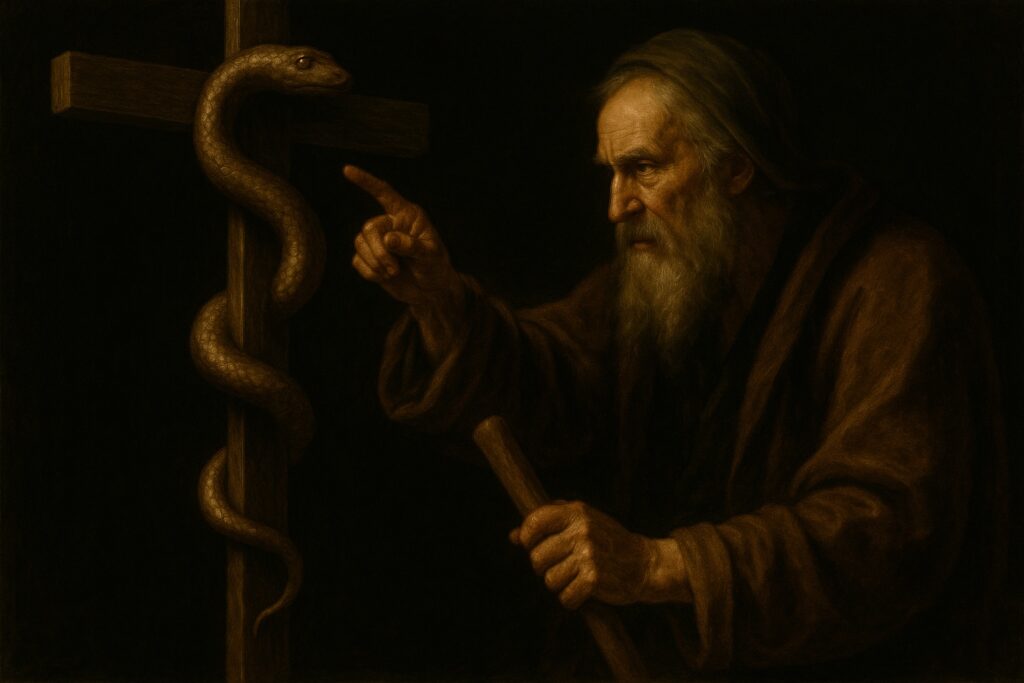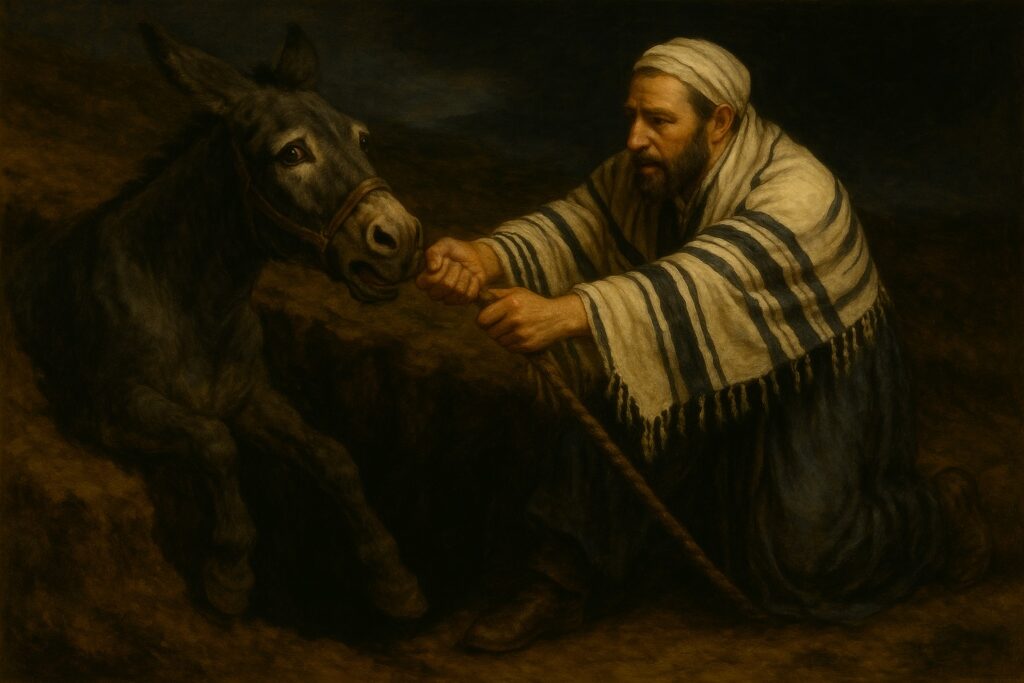Introduction
Catholics with OCD often approach Scripture with rigid lenses, interpreting verses in ways that reinforce compulsions and fears. For instance, they may focus narrowly on texts warning against idolatry, impurity, or judgment, without noticing the broader themes of God’s mercy and the nuance of moral reasoning. In therapy and pastoral care, it can be very helpful to highlight passages in Scripture that emphasize mercy, prudence, as well as the relational nature of God’s law.
This article explores several biblical narratives that model God’s mercy and show nuance in moral situations: Moses lifting up the bronze serpent, Naaman the Syrian’s healing, and Jesus’ teaching on the Sabbath. These narratives demonstrate that morality is not rigid and steeped in legalism but rather that it is derived from a loving relationship with God—whose “mercy that triumphs over judgment” (James 2:13, NAB).
The Bronze Serpent

In Numbers 21:8–9 (NAB), God commands Moses to craft a bronze serpent, so that those bitten by serpents may look at it and live. On the surface, this seems to contradict the commandment against making graven images (Exodus 20:4). Yet the bronze serpent is not an idol but a sacramental-like avenue of God’s healing. This is in obvious contrast to the golden calf (Exodus 32) that was created by the people of Israel out of impatience and unbelief, which led to idolatry. The distinction here lies not in the mere act of crafting an image, but in the intent and use of it. This shows that moral meaning is not rigidly attached to external forms but discerned in context and intention. For a person struggling with OCD, these biblical passages can help them understand that morality is not mechanical. The same outward act (making a statue) can be either a good or bad action—depending on many factors (e.g., context and intention).
Naaman the Syrian
In 2 Kings 5, a Syrian general called Naaman is healed of leprosy after obeying Elisha’s command to wash in the Jordan River. Afterward, Naaman expresses concern about accompanying his king into the temple of Rimmon, where he will bow to a false idol in the king’s presence. Elisha responds to Naaman’s worry with the words “Go in peace” (2 Kings 5:19, NAB). This is perhaps a surprising response and one that reveals moral nuance. Though Naaman will appear to participate in a pagan ritual, his heart is given to the Lord. Elisha does not demand rigidity and tacitly acknowledges the complexity of living faithfully in the world. For individuals with OCD, this passage can demonstrate that God sees the heart rather than external appearances.
Jesus and the Sabbath

Jesus repeatedly challenged rigid interpretations of the Sabbath. In Luke 14:5 (NAB), He asks, “Who among you, if your son or ox falls into a cistern, would not immediately pull him out on the Sabbath day?” This rhetorical question shows that love, charity, and necessity can take precedence over rigid rule-keeping. For those with OCD, this statement on the part of Jesus shows that morality is not a trap set by God but an invitation to live in love. Jesus’ teaching liberates believers from obsessive fear of error and rigid perfectionism.
Potential Clinical Applications
These stories help counteract the rigidity of scrupulosity. In therapy, patients can be encouraged to meditate on these passages, reflecting on how God prioritizes love and mercy and considers a person’s intent, rather than demanding mechanical perfection. Pastors can remind the scrupulous that the Church teaches prudence as the “charioteer of the virtues” (CCC, 1806), which balances important principles with love, mercy, and wisdom in various life situations.
Conclusion
The Bible does not present morality as rigid or compulsive. Instead, Scripture reveals a God of mercy. The bronze serpent, Naaman’s story, and Jesus’ Sabbath teaching all reveal that God’s law is oriented toward life and love. For Catholics with OCD, these passages can provide freedom from compulsive rigidity and encouragement to trust God’s mercy.
References/Further Reading
Catechism of the Catholic Church. (1997). Libreria Editrice Vaticana.
New American Bible. (2011). United States Conference of Catholic Bishops.
